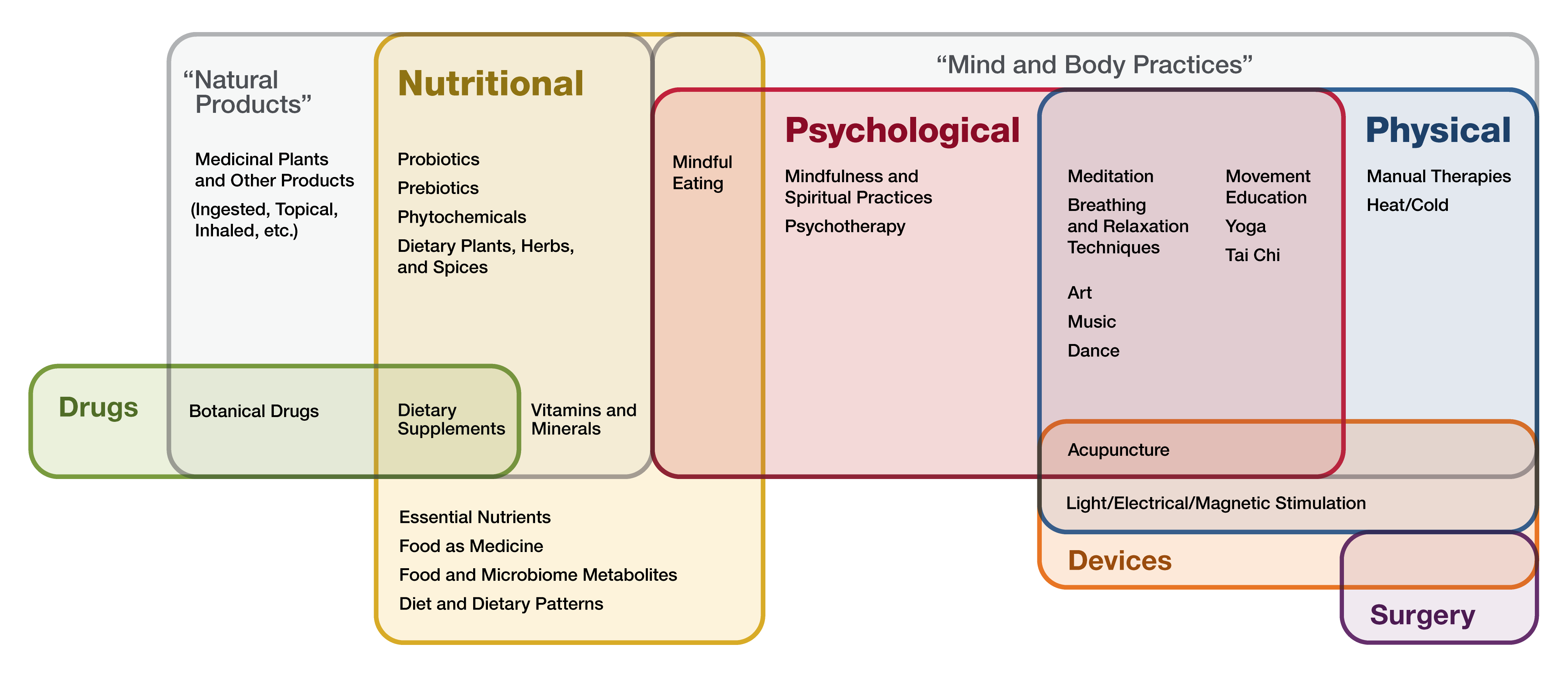102 Conventional vs Other Medical Approaches
Before getting in too deep, we need to have a few definitions. Unlike some trendy books, we need not invent catchy terms that look good on the book cover. The medical industry has struggled with this, so we might as well use the fruits of their deliberations. The CHC uses standard definitions from established medical dictionaries. Further definitions can be found in the Glossary.
Complementary, Alternative, Integrative, Whole Person Health: What’s In a Name?
These terms are continually evolving, along with the field, but here's how the National Center for Complementary and Integrative Health (NCCIH) currently define them;
Conventional or Mainstream
- A system in which medical doctors and other health care professionals (such as nurses, pharmacists, and therapists) treat symptoms and diseases using drugs, radiation, or surgery. Also called allopathic medicine, biomedicine, orthodox medicine, and Western medicine.
Complementary
- If a non-mainstream approach is used together with conventional medicine, it’s considered “complementary”.
Alternative
- If a non-mainstream approach is used in place of conventional medicine, it’s considered “alternative".
Adjuvant
- Additional cancer treatment given after the primary treatment to lower the risk that the cancer will come back. Adjuvant therapy may include chemotherapy, radiation therapy, hormone therapy, targeted therapy, or biological therapy.
Integrative
- Brings conventional and complementary approaches together in a coordinated way. Integrative health also emphasizes multimodal interventions, which are two or more interventions such as conventional health care approaches (like medication, physical rehabilitation, psychotherapy), and complementary health approaches (like acupuncture, yoga, and probiotics) in various combinations, with an emphasis on treating the whole person rather than, for example, one organ system. Integrative health aims for well-coordinated care among different providers and institutions by bringing conventional and complementary approaches together to care for the whole person.
Whole Person
- Refers to helping individuals, families, communities, and populations improve and restore their health in multiple interconnected domains—biological, behavioral, social, environmental—rather than just treating disease. Research on whole person health includes expanding the understanding of the connections between these various aspects of health, including connections between organs and body systems.
Complementary Health Approaches
Complementary approaches can be classified by their primary therapeutic input (how the therapy is taken in or delivered), which may be:
- Nutritional (e.g., special diets, dietary supplements, herbs, and probiotics)
- Psychological (e.g., mindfulness)
- Physical (e.g., massage, spinal manipulation)
- Combinations such as psychological and physical (e.g., yoga, tai chi, acupuncture, dance or art therapies) or psychological and nutritional (e.g., mindful eating).
Examples of complementary health approaches: a Venn Diagram
